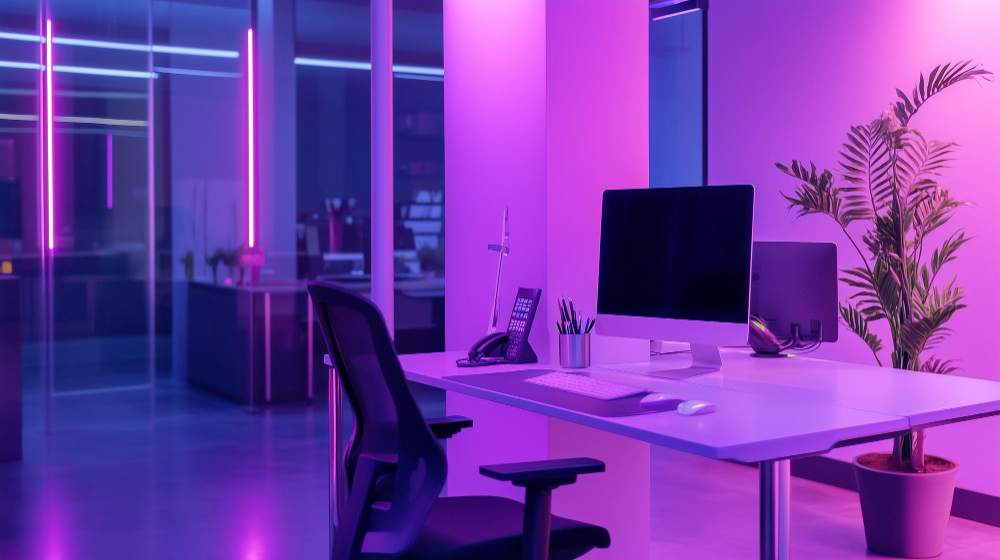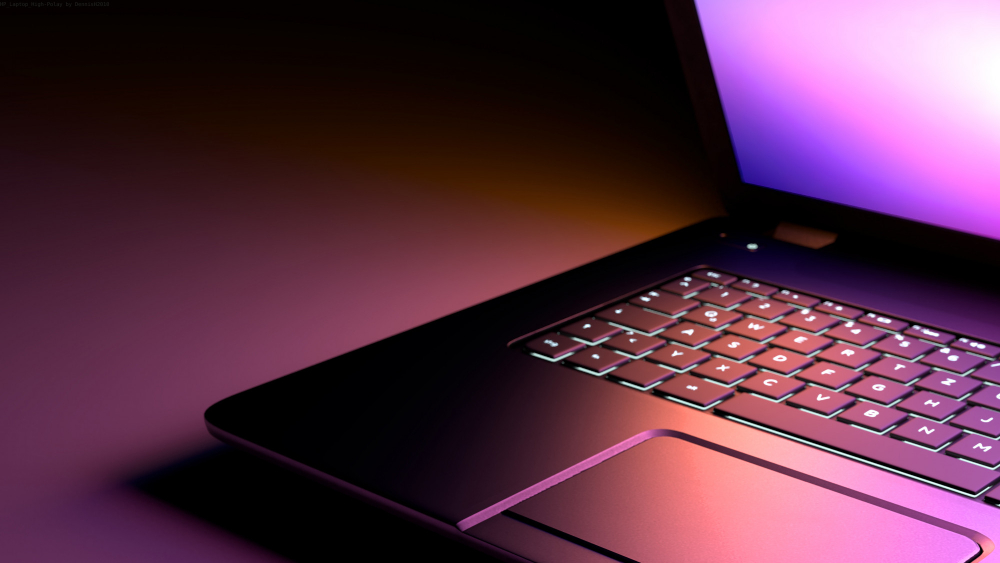The corporate office is no longer a default destination, it is a deliberate choice.
Employees now vote with their presence, and a poor office experience is a silent killer of collaboration and culture. The centerpiece of this new reality is the humble desk.
How we manage it, book it, and experience it has become a proxy for the entire organization’s operational maturity.
I have walked through half empty floors where the frustration was palpable, not from overwork, but from the sheer cognitive load of finding a place to work.
The right hot desking solution is not an administrative tool. It is the core operating system for the physical workplace, and we have been vastly underestimating its strategic weight.
This is about more than software, it is about architecting human connection in a dispersed world.
Choosing a Hot Desking Solution for a Frictionless Workplace

We are well past the point of debating if hybrid work is here to stay.
The question that now keeps me, and the executives I counsel, awake at night is how we build a physical infrastructure that justifies its own existence.
The early, frantic experiments with shared desks are over.
We have moved from the pilot phase to the performance phase.
And the data from this transition is unequivocal, a significant portion of the initial hot desking solution rollouts have failed to meet their core objectives.
Not because the technology was faulty, but because we treated it as a simple plug and play utility, rather than a complex, human centric ecosystem.
I recall a conversation with a frazzled IT director at a financial services firm last quarter. He had proudly deployed a feature rich desk booking system, only to find adoption languishing at 35%. The problem was not in the code.
It was in the coffee stained A4 signs taped to pillars, the “reserved for team X” ghosts that haunted the floor plan, and the visceral sigh of a new hire who spent twenty minutes looking for a seat before a senior partner took pity on them.
The software was a success. The system, the human system, had failed spectacularly. This is the gap we must bridge.
Your next platform must be more than a booking engine, it must be an experience orchestrator.
1. Your Hot Desking Solution is Not an Island

The single greatest technical misstep I witness is the standalone deployment. A hot desking solution that exists in a vacuum creates more friction than it resolves.
Employees are asked to leave their workflow, open a separate tab, navigate an unfamiliar interface, and then return to their work. This context switching is a productivity tax.
The most successful integrations I have architected live where the work already happens.
This means deep, API driven connections into the Microsoft Teams calendar, where a room reservation can automatically trigger a desk booking suggestion right in the flow of planning.
It means single sign on that is truly seamless, not just a gateway to a separate portal.
It means the hot desking booking system data feeding directly into the building management system, allowing for dynamic climate control and energy savings based on real time occupancy, a tangible ROI that CFOs appreciate.
I have seen the lightbulb moment for facility managers when they realize they can cool a zone that is only 20% occupied less aggressively.
This is where the tool shifts from a cost center to an intelligence hub.
The goal is zero friction, zero extra steps. The booking should feel like a natural extension of the workday, not an administrative hurdle.
2. Data Fidelity and the Myth of Utilization

Everyone wants to talk about utilization metrics. But a raw percentage of desks booked is arguably one of the most misleading and dangerous KPIs in the modern workplace portfolio.
I have walked floors that showed 90% booking rates, only to find them 60% physically occupied.
This is the phenomenon of “ghost booking,” where employees, burned by previous experiences of scarcity, book a desk “just in case,” creating artificial demand and frustrating their colleagues.
The sophisticated hot desking solution today must move beyond simple booking data.
It needs to leverage IoT, whether through simple, privacy compliant desk sensors or through anonymized data from your enterprise WiFi, to measure actual presence.
This creates a feedback loop of truth. You are not managing reservations, you are managing real estate performance.
This accurate data allows you to right size your portfolio with confidence, but more importantly, it informs the employee experience.
A system that can intelligently release ghost booked desks based on check in patterns, or suggest high probability available desks based on real time movement, builds trust.
It turns a system of control into a system of service. Understanding this data is the first step toward genuine desk sharing success stories, where the numbers on a dashboard finally match the reality on the ground.
3. The Psychology of Choice and Control

The human element is the most complex variable in this entire equation.
The transition from an assigned desk to a free for all can feel like a loss of status, a loss of anchor, a loss of control.
The best hot desking solution does not just offer choice, it architects it in a way that feels empowering, not overwhelming.
I have studied teams that thrived and teams that revolted, and the difference often came down to the design of the choice architecture.
Consider the cognitive load on an employee walking onto a vast, undifferentiated floorplate of 200 identical desks.
This is not choice, it is analysis paralysis. The modern solution must allow for nuanced zoning.
- Quiet zones for deep work, clearly marked and enforced by policy.
- Collaborative neighborhoods for teams that need to work together.
- Phone booths for confidential calls, bookable alongside the desk.
This segmentation creates a scaffold for the workday. It allows an employee to make a quick, confident decision based on their task list for the day.
Furthermore, features like “favorite desk” patterns, where the system learns an individual’s preference for a certain light-filled corner or a specific monitor setup, and proactively suggests it, reintroduce a layer of personalization.
This is where the technology demonstrates empathy. It is not about forcing conformity, it is about understanding workstyles and facilitating them.
This thoughtful approach is what separates a mere hot desking booking system from a true workplace enablement platform.
4. The IT Burden: Security, Scalability, and Shadow IT

From my side of the firewall, the conversation is equally fraught.
A poorly vetted hot desking solution can become a security nightmare and a support black hole.
I have had to intervene when a business unit, frustrated with corporate IT’s pace, spun up a consumer grade booking app that stored employee location data on unsecured servers.
The shadow IT risk is very real.
Any platform you select must be enterprise grade from the ground up.
This means robust security protocols, SOC 2 compliance, and clear data governance policies.
Where is your occupancy data stored, who has access to individual booking histories, and how is it anonymized for aggregate analysis? These are not afterthoughts, they are table stakes.
Furthermore, the solution must scale not just in terms of user count, but in terms of portfolio complexity.
Can it handle multiple buildings across different time zones, with different booking rules for each?
Can it integrate with your existing IAM (Identity and Access Management) system? The administrative overhead of a fragmented system can cripple a small IT team.
The goal is to centralize and simplify management, not create a new silo of technical debt.
When evaluating a vendor, press them on their API roadmap and their security audit history.
Their answers will tell you everything you need to know about their suitability for a corporate environment.
5. The Change Management Equation: Technology is Only 30%

You can buy the most sophisticated platform on the market, but if you skip the human implementation, you will fail.
I have seen this pattern in countless teams. The rollout is treated as a technology deployment, not a cultural transformation.
The hot desking solution becomes the scapegoat for every pre existing workplace grievance.
A successful rollout requires a coalition.
It is not just an IT project. It needs champions from HR, Corporate Real Estate, Facilities, and executive leadership.
The communication cannot be a single email on launch day.
It must be a sustained campaign that explains the “why.” Why are we doing this? To create a more dynamic, collaborative, and effective workplace. To give you more flexibility, not less.
To optimize our space so we can invest in better amenities for everyone. You need to provide ample training, not just on how to click the buttons, but on the new protocols of a shared workspace.
How do you handle a situation where someone is at your booked desk? What is the etiquette for using phone booths?
This ground work, this focus on the social contract, is what separates a chaotic floor from a cohesive community.
The tools are useless without the rules and the buy in. This is the foundational work that enables true desk sharing success stories.
6. The Hardware Handshake: Beyond the Screen

We live in a physical world. The digital experience of booking a desk must flawlessly connect to the analog experience of using it.
This handoff is where most systems break down. An employee books a desk with a specific monitor configuration, only to arrive and find the cables are missing or the dock is broken.
This single point of failure destroys trust in the entire system.
The next generation hot desking solution must include a hardware management component. This does not mean just selling you dongles.
It means providing a real time inventory of asset conditions.
Was that desk reported as having a faulty monitor yesterday? Has it been serviced?
The system should be able to take a desk out of rotation automatically until facilities confirms the repair.
Furthermore, the concept of what is hot desk is evolving to include the technology attached to it.
A truly smart desk knows what assets it has. When an employee books “Desk 14A,” they are not just booking a piece of real estate, they are reserving a 27-inch 4K monitor, a universal docking station, and a high quality webcam.
The booking interface should confirm this. This reliability, this certainty, is what convinces employees to leave their personal setups at home and embrace the agile environment.
It turns a gamble into a guarantee.
7. The Future is Predictive, Not Reactive

We are on the cusp of a major shift from reactive booking to predictive orchestration.
The current model still places the burden on the employee to plan and book.
The future system will use data and machine learning to anticipate needs and proactively manage the workplace ecosystem.
Imagine a system that analyzes historical booking data, team calendars, and even project management tool deadlines to predict space demand for the coming week.
It could nudge team leaders, suggesting they block a cluster of desks for a sprint review.
It could guide individual employees, saying, “Based on your calendar, you have three collaborative meetings downtown on Thursday.
Would you like me to reserve a desk in the innovation zone for you?” This moves the system from a passive tool to an active assistant. It reduces the daily cognitive tax of planning where to work.
For the organization, this predictive capacity allows for hyper efficient management of resources, from desk layouts to cafeteria staffing.
This is the ultimate destination for a mature hot desking solution, where it ceases to be a distinct application and becomes an intelligent, ambient layer of the work environment itself.
Exploring a hot desk to rent in a third party coworking space could even be integrated into this predictive flow for employees living in specific suburbs, expanding the corporate footprint seamlessly.
The journey to a truly effective hybrid workplace is ongoing. It is a complex puzzle of technology, human behavior, and physical design.
The choice of your hot desking solution is the most tangible and impactful decision you will make in this domain. It is the linchpin.
Look beyond the feature checklist. Look for a platform that understands the nuance of integration, the primacy of accurate data, and the profound importance of the human experience. Your office’s future relevance may depend on it.
What exactly is a hot desking solution?
A hot desking solution is a technology platform, comprising both software and often integrated hardware, that enables the dynamic management and booking of non assigned workspaces. It goes beyond a simple reservation system to include space utilization analytics, integration with other enterprise tools like calendars, and features designed to manage the entire employee experience in a flexible office environment.
How can we ensure our hot desking project succeeds?
Success hinges on treating the rollout as a change management initiative, not just a tech install. Secure executive sponsorship, form a cross functional team with IT, HR, and Facilities, and invest heavily in clear, continuous communication and training. Choose a hot desking solution that integrates deeply into existing workflows and provides reliable, accurate data on actual space usage to build employee trust.
What are the key features to look for in a booking system?
Prioritize deep integrations with your core collaboration stack like Microsoft Teams or Slack. Ensure it offers robust zoning and space categorization, a mobile first user interface, and detailed analytics on both bookings and sensor verified occupancy. Enterprise grade security, scalability, and a comprehensive API for connecting to other building systems are non negotiable for a corporate hot desk booking system.
How do we measure the ROI of a hot desking solution?
Look beyond simple desk booking rates. True ROI is found in the reduction of your real estate footprint through accurate utilization data, increased employee satisfaction scores related to workplace flexibility, and the hard cost savings from optimizing energy, cleaning, and maintenance based on predictive occupancy data.
Can hot desking work for all types of teams?
While highly effective for individual contributors and cross functional teams, it can be challenging for teams that require specialized, permanent hardware or handle highly sensitive physical materials. The key is a flexible hot desking solution that supports a hybrid approach, allowing for bookable dedicated team neighborhoods or specialized zones alongside general shared desks.
